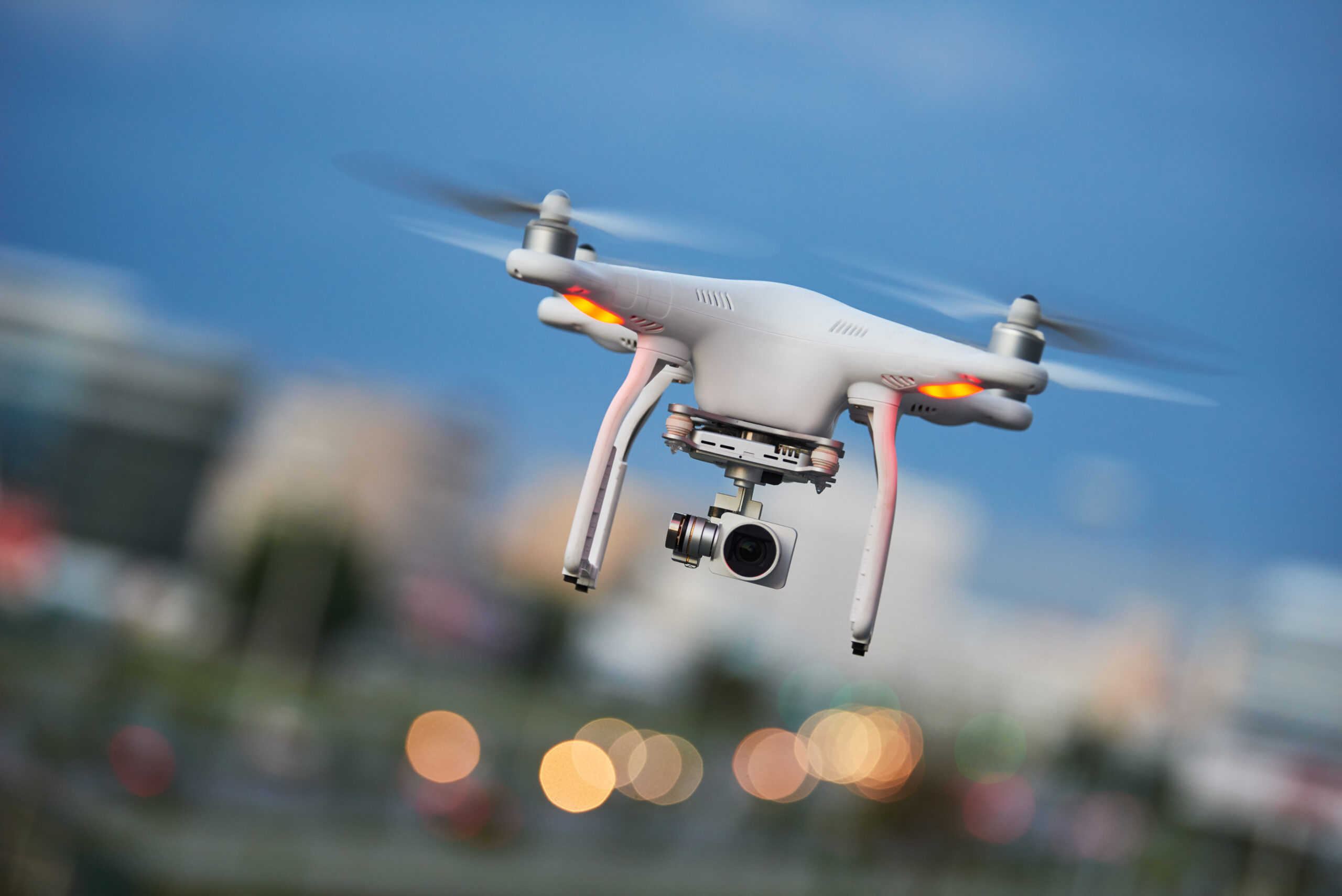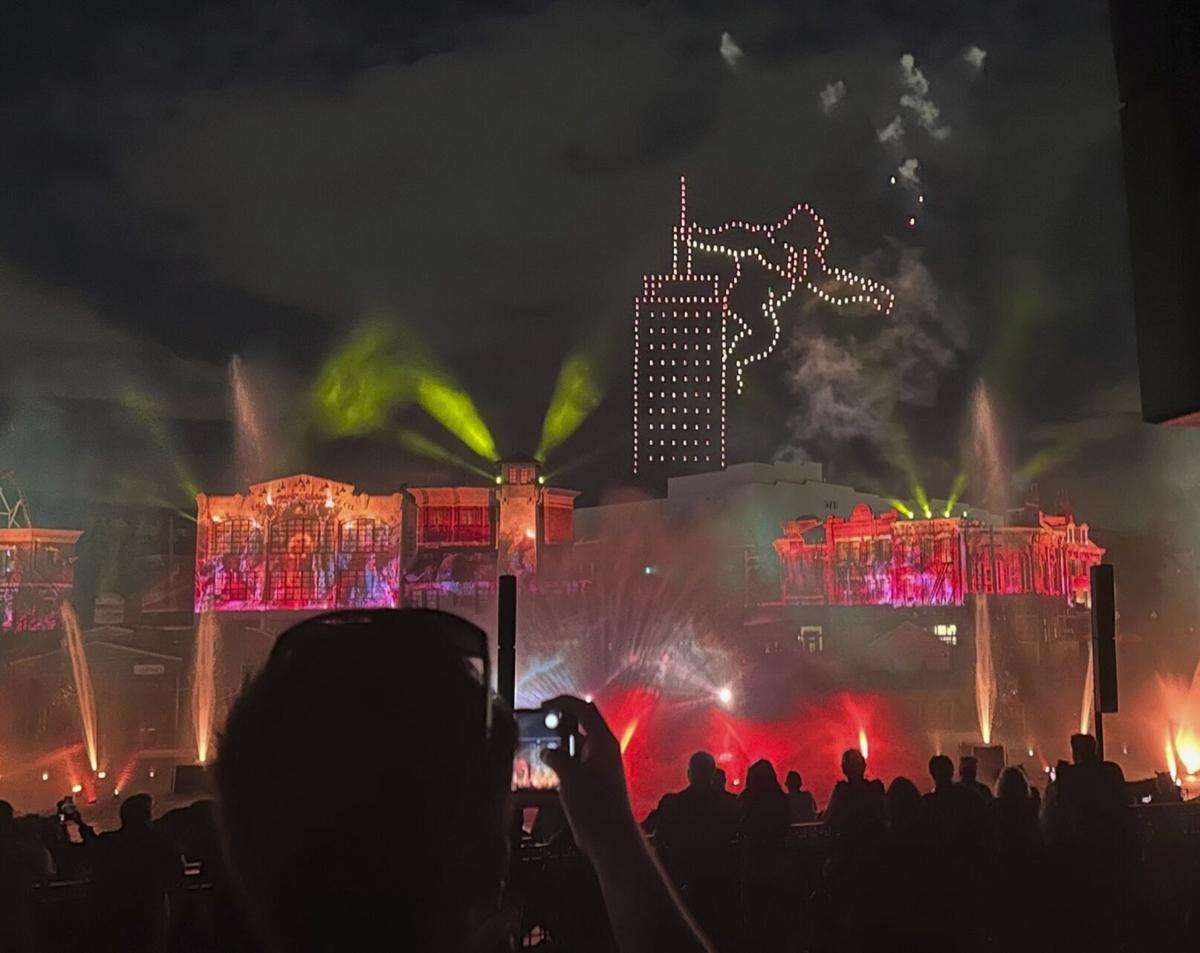Drone show accidents, while relatively rare, highlight the inherent risks in this increasingly popular form of entertainment. This guide delves into the various types of accidents, from simple malfunctions to catastrophic failures, exploring the contributing factors and the crucial safety protocols needed to mitigate risks. We’ll examine accident investigations, legal ramifications, and best practices for ensuring safe and spectacular drone shows.
Understanding the potential dangers and implementing robust safety measures are paramount. This comprehensive overview aims to equip both organizers and enthusiasts with the knowledge necessary to appreciate the beauty of drone shows while minimizing the potential for accidents.
Drone Show Accidents: Understanding, Preventing, and Mitigating Risks

Drone shows, with their captivating displays of synchronized aerial choreography, are increasingly popular. However, the complexity of these productions introduces inherent risks. Understanding the various types of accidents, implementing robust safety protocols, and thoroughly investigating incidents are crucial for ensuring the safe and responsible operation of drone shows.
Types of Drone Show Accidents

Drone show accidents can be broadly categorized into malfunctions, collisions, and operator errors. Different drone types have varying failure points, and weather conditions significantly influence flight stability.
| Type of Accident | Description | Frequency (Estimated) | Contributing Factors |
|---|---|---|---|
| Malfunctions | Unexpected failures in drone systems, including motor failures, GPS signal loss, battery issues, or software glitches. | High (due to complex systems) | Poor maintenance, faulty components, software bugs, extreme temperatures. |
| Collisions | Crashes involving two or more drones, or a drone colliding with an obstacle (buildings, trees, etc.). | Moderate | Poor spatial awareness, inadequate GPS accuracy, lack of obstacle avoidance systems, strong winds. |
| Operator Errors | Mistakes made by the drone pilot, such as incorrect programming, loss of control, or failure to follow safety protocols. | High (human error is a major factor) | Lack of training, inadequate experience, poor communication, fatigue, distractions. |
Larger, more complex drones, often used in large-scale shows, might have more potential failure points due to their intricate systems. Smaller, simpler drones, while potentially less complex, can be more susceptible to wind conditions. For example, a quadcopter might experience motor failure, while a larger octocopter, with redundancy built in, might still maintain flight control even with one or two motor failures.
Adverse weather conditions like strong winds, rain, or fog severely impact flight stability and safety. Strong winds can cause drones to lose control or drift off course, while rain and fog can reduce visibility and GPS accuracy. A memorable example is a show where heavy winds caused several drones to crash into each other, resulting in a spectacular, yet dangerous, display of malfunctioning drones.
Safety Protocols and Regulations
Stringent safety protocols and adherence to regulations are essential for preventing accidents. This involves comprehensive pre-flight checks, well-defined emergency procedures, and thorough post-flight assessments.
- Pre-flight Checks: Battery levels, motor function, GPS signal strength, software updates, and weather conditions must be meticulously checked.
- Emergency Procedures: Protocols for dealing with malfunctions, loss of signal, or collisions should be established and practiced regularly. This might include emergency landing procedures or fail-safe mechanisms.
- Post-flight Assessments: A detailed review of the show’s performance, including any near misses or incidents, should be conducted to identify areas for improvement.
Regulations vary across countries. Some countries have strict licensing requirements for drone operators, while others may have more relaxed guidelines. The FAA in the US, for instance, has specific regulations regarding drone operations in populated areas, while the CAA in the UK has its own set of rules. Common elements across regulations often include airspace restrictions, operator certifications, and safety protocols.
Safety technologies such as GPS tracking, obstacle avoidance systems, and fail-safe mechanisms play a vital role. GPS tracking allows for real-time monitoring of drone locations, obstacle avoidance systems help prevent collisions, and fail-safe mechanisms can automatically land the drone in case of a malfunction. The effectiveness of these technologies depends on factors such as accuracy, reliability, and integration with the overall drone control system.
Accident Investigation and Analysis
A systematic approach to investigating drone show accidents is crucial for identifying root causes and preventing future incidents. This involves evidence collection, witness interviews, and thorough data analysis.
- Evidence Collection: Gather all relevant data, including drone flight logs, video footage, witness statements, and any damaged equipment.
- Witness Interviews: Conduct interviews with all relevant personnel, including pilots, organizers, and spectators, to gather accounts of the incident.
- Data Analysis: Analyze the collected data to identify patterns, anomalies, and potential causes of the accident.
Improvements in accident investigation methods could include the use of advanced data analytics, improved drone flight data recording, and standardized reporting procedures. Better integration of data from different sources, like drone telemetry and weather data, could enhance the accuracy and efficiency of investigations.
Hypothetical Scenario: Imagine a drone show where a sudden gust of wind causes several drones to lose control and collide. The investigation would involve reviewing flight logs for any anomalies, interviewing the pilots and ground crew, and analyzing weather data from the time of the incident. The root cause might be identified as inadequate wind assessment during pre-flight checks. Recommendations would include stricter wind speed limits for drone shows and more robust wind monitoring systems.
Impact and Consequences, Drone show accident

Drone show accidents can have significant consequences, ranging from minor property damage to serious injuries and reputational harm. The legal and financial ramifications can be substantial for both operators and organizers.
Drone show accidents, unfortunately, happen. Sometimes it’s a simple malfunction, other times it’s something more serious. To avoid these issues, many professionals rely on robust and reliable drones like those from sky elements drones , known for their stability and advanced safety features. Proper planning and high-quality equipment, like what Sky Elements offers, are key to preventing a drone show accident and ensuring a spectacular, safe display.
- Property Damage: Damaged drones, infrastructure, or nearby property.
- Injuries: Injuries to spectators, pilots, or other personnel.
- Reputational Harm: Negative publicity and loss of public trust.
- Legal Ramifications: Lawsuits, fines, and potential criminal charges.
- Financial Ramifications: Costs of repairs, legal fees, and potential loss of revenue.
Accidents can significantly impact public perception and trust in drone technology. Negative media coverage of accidents can create public anxiety and skepticism, hindering the wider adoption of drone technology for entertainment and other applications. A well-publicized accident could lead to increased regulatory scrutiny and stricter safety standards.
Mitigation Strategies and Best Practices
Effective mitigation strategies focus on pilot training, equipment maintenance, and emergency response planning. Best practices for organizers encompass site selection, audience safety, and clear communication protocols.
Pilot Training: Rigorous training programs that cover emergency procedures, weather awareness, and risk management are essential. Regular refresher courses and simulations can enhance pilot skills and preparedness.
Equipment Maintenance: Regular inspections, maintenance, and repairs are vital for ensuring the reliability and safety of drone systems. Using high-quality components and adhering to manufacturer’s guidelines are critical.
Drone show accidents, sadly, aren’t unheard of. These spectacular displays can sometimes go wrong, leading to malfunctions or even injuries. A recent example highlighting the potential risks involved is the orlando drone show accident , which serves as a reminder of the importance of thorough planning and safety protocols. Ultimately, understanding these incidents helps improve safety measures for future drone shows.
Emergency Response Planning: Developing and practicing emergency response plans is crucial. This includes protocols for dealing with drone malfunctions, collisions, or other unexpected events. Designated emergency personnel should be readily available.
Successful safety programs often incorporate elements such as comprehensive risk assessments, rigorous pre-flight checks, real-time monitoring systems, and detailed post-show debriefings. Organizations that prioritize safety often have fewer accidents and maintain a positive reputation.
Outcome Summary
Successfully navigating the world of drone shows requires a proactive approach to safety. By understanding the various types of accidents, implementing stringent safety protocols, and thoroughly investigating incidents, we can collectively work towards a future where these spectacular displays continue to captivate audiences without compromising safety. This guide serves as a resource for continuous improvement and a reminder that responsible operation is key to the continued success and enjoyment of drone shows.
FAQ Resource
What is the most common type of drone show accident?
Minor malfunctions like GPS glitches or individual drone failures are most frequent. Larger-scale incidents are thankfully less common.
What is the role of insurance in drone show accidents?
Drone show accidents, sadly, can happen. Proper planning and safety measures are crucial to avoid them, as highlighted by the impressive scale of the orlando drone show , which, while spectacular, also underscores the potential risks involved. Understanding these risks is key to preventing future drone show accidents and ensuring these amazing displays remain safe and enjoyable.
Comprehensive insurance is crucial for covering potential damages, injuries, and legal liabilities stemming from accidents.
How can I find certified drone show operators?
Look for operators with proven safety records, proper licensing, and adherence to industry best practices. Check for relevant certifications and testimonials.
What is the future of drone show safety technology?
Advancements in AI, autonomous flight systems, and improved obstacle avoidance technologies promise to enhance safety significantly.